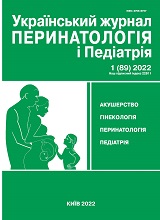Creation of mental maps - innovative way of organizing information during study
DOI:
https://doi.org/10.15574/PP.2022.89.45Keywords:
mental map, learning technology, information, educational processAbstract
Reforming higher education, including medical, involves the introduction of the latest educational technologies, which allows to prepare future doctors who can synthesize the acquired theoretical and practical material to correctly diagnose and choose treatment, make decisions in non-standard situations, ie, develop in them clinical thinking. It is established that the information provided in the text version is assimilated by about 70% of students, while the text is supplemented by diagrams, drawings, tables - about 95% of students. In addition, on the one hand it allows to cover the entire structure of the submitted material, on the other hand - reveals the specifics and features of each element in particular. One of the modern innovative ways of organizing information during learning is mental maps - a technique of visualization of thinking; method of recording, using lists and diagrams (for example, «trees» or charts). Mental maps are widely used during the learning process, for example to process and organize information, keep notes of practical classes conducting practical classes and lectures, create lecture presentations, activate the creative component to generate new ideas, brainstorming and more. Mind maps can be created both by drawing and using computer programs such as Google (www.coggle.it), Freemind, MindMeister (www.mindmeister.com) etc.
Therefore, to better absorb information, improve the preparation of students for final certification and further professional activities, it is advisable to use a variety of modern educational technologies, including the creation of mental maps that develop thinking, memory and imagination, as well as creativity that promotes effective formation of professional competencies in students.
The research was carried out in accordance with the principles of the Helsinki declaration. The study protocol was approved by the Local ethics committee of the participating institution. The informed consent of the patient was obtained for conducting the studies.
No conflict of interests was declared by the authors.
References
Abuvatfa C, Lungol OM, Sukhovirskaya LP. (2019). Features of the use of mental maps in the classes of natural sciences of higher medical education. Proceedings. 183: 206-209. https://doi.org/10.36550/2415-7988-2019-1-183-206-209
Bubich OA, Gilevich EG. (2016). Clip thinking and organization of the pedagogical process in higher education. Modeling of effective speech communication in the context of academic and professionally oriented interaction: coll. scientific Art. Under common. ed. OV Lushchinskaya, EV Savich. Minsk: Belarus. state University: 65-71. URL: http://elib.bsu.by/handle/123456789/1.
Busen T. (2003). Superthinking. Per from English EA Samsonov. Mn: Popurri: 304.
Busen T. (2007). Memory Cards. Use your memory 100%. М: Rosmen-Press: 96.
Dolgopol O. (2018). The use of mental maps in the training of teachers of higher educational institutions. Theory and practice of social systems management. 1: 73-80.
Koltunovich TA, Polishchuk OM. (2019). The use of mental maps as a means of visualization in the process of teaching social psychology. Young scientist. 7.1 (71.1): 19-26.
Levkiv MO. (2016). Application of the case method in the professional training of foreign students at the Department of Therapeutic Dentistry. Medical education. 3: 71-74.
Mashkin BB. (2011). The use of mental maps in the training of specialists in geography. Problems of continuing geographical education and cartography. 13: 62-64.
Peregudova V. (2020). Mind map as a means of visualization of technological processes. Scientific notes of the Belarusian State Pedagogical University. 3: 88-97. https://doi.org/10.31494/2412-9208-2020-1-3-88-97
Pushkar OI, Zavgorodnya OS. (2018). Using memory cards to structure the information space of academic disciplines in E-LEARNING. Information processing systems. 2 (153): 108-116.
Romanovska O. (2019). Application of associative teaching methods in the preparation of masters of educational sciences. Theory and practice of social systems management. 1: 28-40. https://doi.org/10.20998/2078-7782.2019.1.03
Romanovsky OG, Grinyova VM, Revzan OO. (2018). Mental maps as an innovative way of organizing information in the educational process of higher education. Information technologies and teaching aids. 2 (64): 185-196.
Downloads
Published
Issue
Section
License
Copyright (c) 2022 Ukrainian Journal of Perinatology and Pediatrics

This work is licensed under a Creative Commons Attribution-NonCommercial 4.0 International License.
The policy of the Journal “Ukrainian Journal of Perinatology and Pediatrics” is compatible with the vast majority of funders' of open access and self-archiving policies. The journal provides immediate open access route being convinced that everyone – not only scientists - can benefit from research results, and publishes articles exclusively under open access distribution, with a Creative Commons Attribution-Noncommercial 4.0 international license(СС BY-NC).
Authors transfer the copyright to the Journal “MODERN PEDIATRICS. UKRAINE” when the manuscript is accepted for publication. Authors declare that this manuscript has not been published nor is under simultaneous consideration for publication elsewhere. After publication, the articles become freely available on-line to the public.
Readers have the right to use, distribute, and reproduce articles in any medium, provided the articles and the journal are properly cited.
The use of published materials for commercial purposes is strongly prohibited.

